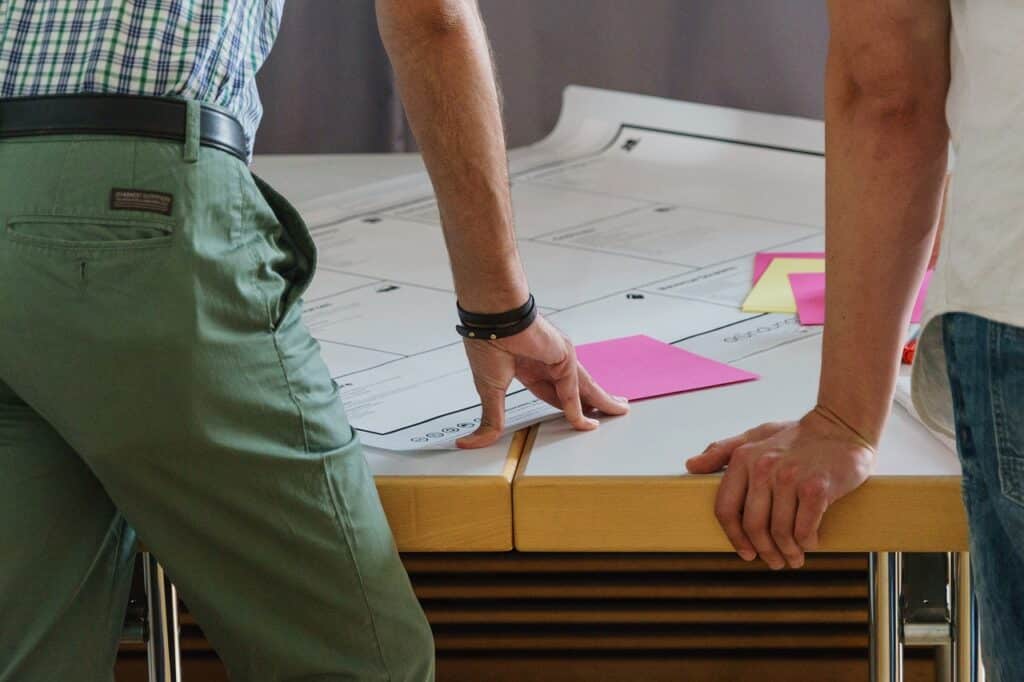Design Thinking and innovation: what's at stake?
Innovation and engineering: the human and creative approach of Design Thinking as an engine for transformation.

Innovation is not just about adopting new technologies; it also involves a revolution in the way we think and design. In the industrial sector, where innovation is a key competitive lever, Design Thinking is a genuine methodological revolution. It puts people at the heart of the creative process, and combines engineering and design to solve complex problems in innovative ways. What are the challenges of Design Thinking in industry, and how can it transform innovation strategies?
The impact of Design Thinking on industrial innovation
With its fundamentally human-centered approach, Design Thinking is revolutionizing the way engineers approach problems. This methodology, which focuses on a deep understanding of user needs, enables the development of solutions that truly meet market expectations. By integrating Design Thinking into their processes, companies can not only improve the quality of their offerings, but also accelerate the development cycle and strengthen their global competitiveness.
Understanding user needs
The first step in Design Thinking is to immerse oneself in the user experience to understand their real needs. This empathetic approach enables engineers to move beyond obvious solutions and uncover hidden opportunities for innovation. By focusing on user needs first, engineering companies can develop solutions that truly meet market expectations. Design Thinking thus paves the way for unexpected and relevant innovations.
Fostering creativity and innovation
Design Thinking is a catalyst for a culture of innovation where creativity is at the forefront. This methodology encourages engineering teams to adopt brainstorming and rapid prototyping techniques, opening the door to a range of innovative ideas. This iterative approach is crucial for rapidly testing the feasibility of concepts and refining solutions.
Consider the example of a car manufacturer. Using Design Thinking, the team organizes brainstorming sessions to explore new vehicle design ideas. One of these ideas leads to the development of a compact electric car prototype, adapted to urban environments. Thanks to rapid prototyping, the team can test and refine the concept, resulting in the design of an innovative vehicle that meets the needs of urban mobility and the growing demand for environmentally-friendly solutions. This approach has not only stimulated creativity, but also accelerated the innovation process, placing the company at the forefront of the automotive sector.
By promoting creativity and adopting agile methods, Design Thinking enables engineering companies to remain competitive and innovate effectively in a constantly changing market.
The challenges of integrating Design Thinking into engineering
Although Design Thinking offers many advantages, its integration into industrial engineering is not without its challenges. Companies need to overcome cultural and organizational barriers to fully embrace this approach.
Changing mindsets
Switching to a user-centered approach requires a change of mentality within engineering teams. In particular, integrating Design Thinking means :
- Challenging traditional methods: engineering teams need to move away from conventional methods and adopt a more open, collaborative perspective.
- Training and awareness-raising: companies need to invest in training their teams in the principles of Design Thinking, to ensure a smooth transition to this new approach.
- Promoting a culture of open innovation: encouraging an environment where new ideas are valued and collaboration is the norm.
Integration into existing processes
Integrating Design Thinking into existing engineering processes can be complex. Companies need to find ways of aligning this approach with their product development methodologies and operational constraints. This often requires rethinking processes and adapting project management tools and systems.
Let's take the case of this car manufacturer, which recently undertook to integrate Design Thinking into its design processes for a new electric vehicle model. To do so, it had to review its working methods, integrating brainstorming and rapid prototyping sessions at the start of the project. This involved training teams in these new methods and implementing more flexible project management systems, capable of adapting to the iterative approach of Design Thinking. The result? A series of new vehicle designs at the cutting edge of innovation and better adapted to consumer needs.
Design thinking: a lever for the future of engineering
Design Thinking is not just an innovative methodology. It is also (and above all) a strategic lever for the future of industrial engineering. By adopting this approach, companies can not only improve their capacity for innovation, but also respond more effectively to today's market challenges.
Responding to market challenges through product innovation
In a constantly evolving market, Design Thinking enables engineering companies to remain agile and responsive in the design of innovative industrial products. In the automotive industry, for example, this approach has led to the creation of vehicles that are more ergonomic, energy-efficient and adapted to consumer expectations.
Stimulating growth and competitiveness
Design Thinking is an engine for growth and competitiveness. By fostering innovation, companies can develop more creative offerings and differentiate themselves in the marketplace. This approach also helps optimize internal processes and reduce costs. In industry, Design Thinking contributes to better overall performance through the design of more intuitive user interfaces and safety-optimized work environments.
Ultimately, Design Thinking is much more than just a methodology; it represents a revolution in industrial engineering innovation processes. By integrating Design Thinking into their strategies, companies are not only responding to contemporary challenges... they are positioning themselves as forerunners. To successfully navigate this transformation, it's essential to surround yourself with competent, experienced partners. At AMEG Group, we can help you, thanks to our expertise in industrial engineering and our mastery of Design Thinking. Contact us to turn your challenges into opportunities.


